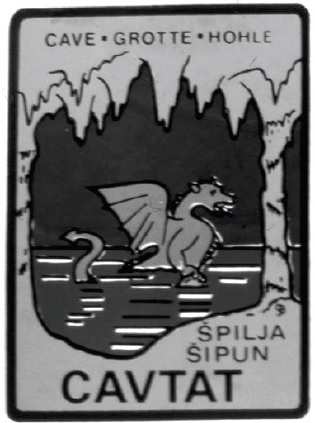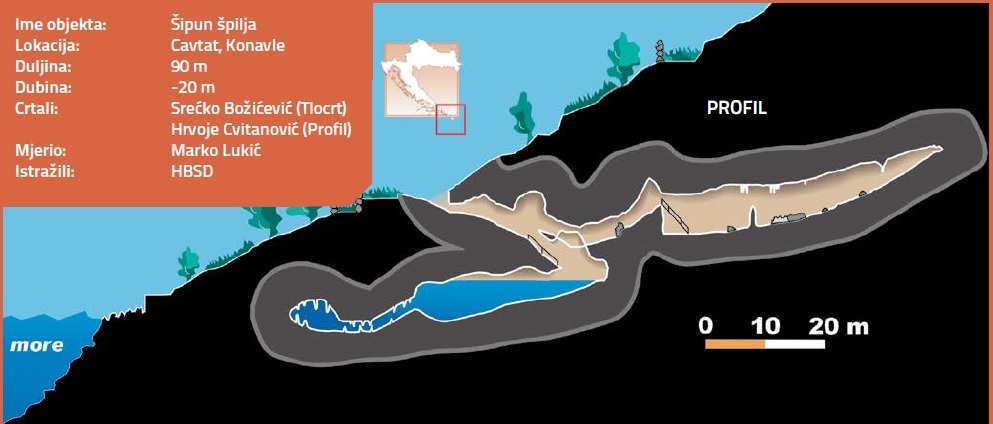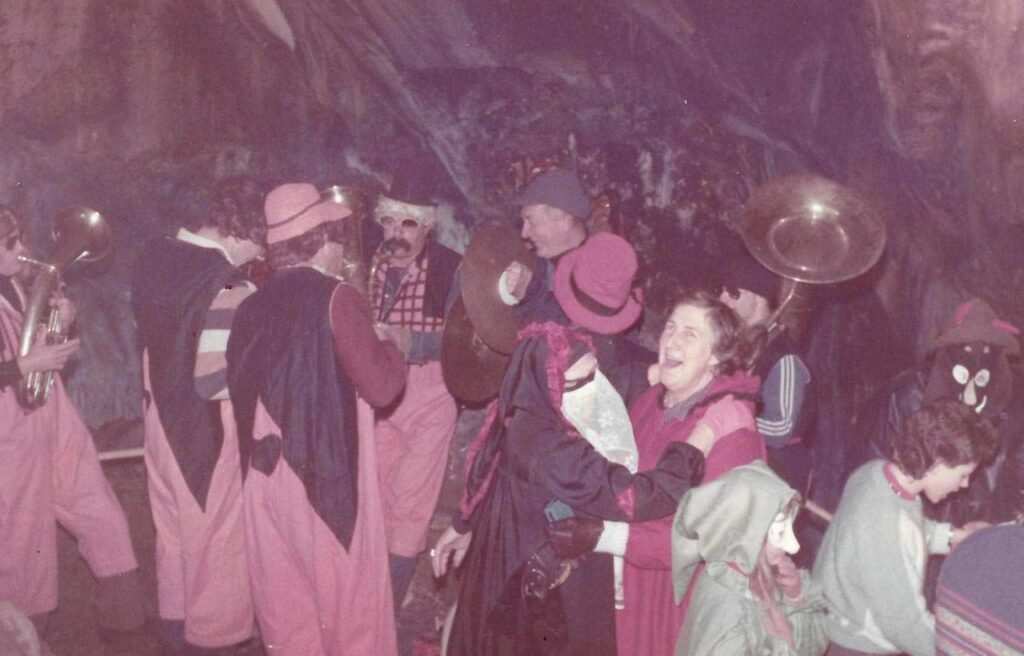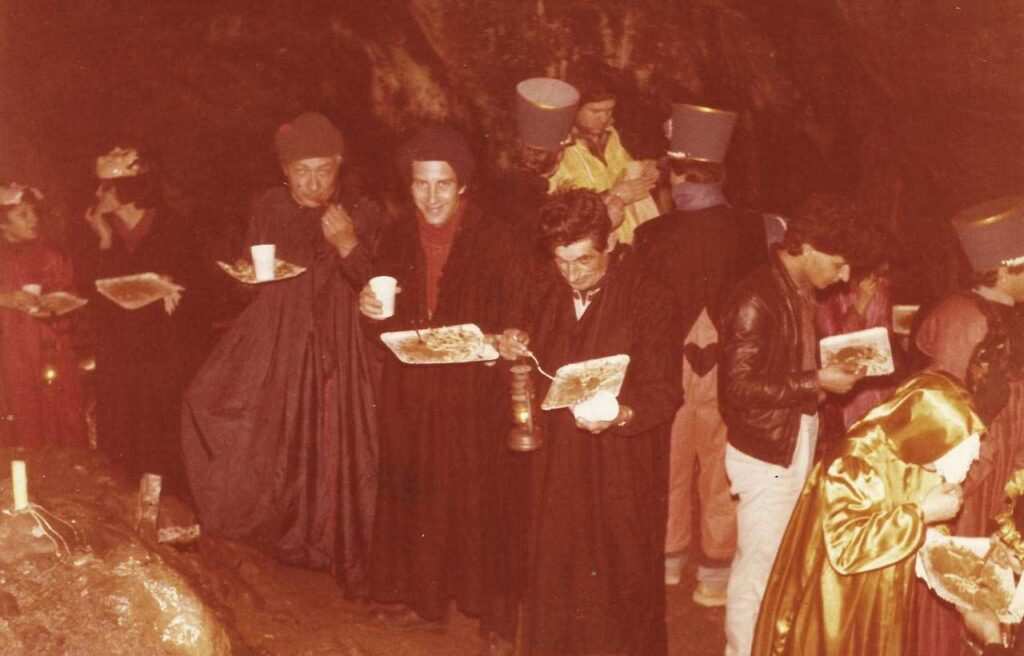The Šipun cave, declared a protected geomorphological natural monument in 1963, is located on the northeastern part of the Rat Peninsula in Cavtat. It is 90 metres long, 20 meters deep and easily accessible, which is one of the reasons why it has been frequently visited and mentioned throughout history.
In addition to geomorphological features typical of a cave, such as stalagmites and stalactites, Šipun contains a rather rare phenomenon – a subterranean lake. Namely, in the cave there is a crack created approximately 10,000 years ago; it allowed the inflow of sea water, while fresh rainwater accumulated through the earth’s crust from the surface, creating a lake in which the salinity oscillates from almost fresh water on the surface to sea water at the bottom. The average temperature of the water in the lake is 14.7 °C, while the average temperature in the cave is 14.8 °C.
More than 100 animal species inhabit the cave; 40 of those are true cave species, while the majority of them are endemic. Furthermore, it is also a type locality (locus typicus) for as many as 18 taxa, which is the largest recorded number of type localities in Croatia. Type localities are speleological objects in which new species are found, which are subsequently used as basis for description of new animal taxa for scientific purposes. As such, Šipun is home to snails, spiders, pseudoscorpions, copepods, beetles and many other cave animals.
Throughout history, many writers have written about the cave, the most notable being Nikola Gučetić, Junije Palmotić, Francesco Maria Appendini, Arthur Evans, and Petar Kuničić. In addition to its location and geomorphological features, the cave attracted the attention of all these writers because it is associated with an almost 2,000-year-old legend first described by St Jerome (340 – 420 C.E.).
St Jerome describes the life of St Hilarion (291 – 371) who, staying in Epidaurum around 360, slew the terrible dragon, Boas. Namely, Boas lived in the cave and terrorized the inhabitants of Epidaurum. St Hilarion defeated him by burning him at the stake in today’s village of Mlini. However, St Jerome’s name is not on the above list of writers because he does not mention the cave in which Boas dwelt. It was only in the 16th century that the Šipun cave was first linked to this story; since then, its place in the legend has become a generally accepted fact.
Throughout history, the Šipun cave was often associated with the legend of the foundation of Epidaurum, according to which the city was founded by King Cadmus. According to legend, Cadmus was transformed into a snake on his deathbed and granted immortality; in his new form, he continued to dwell in the cave. However, today it is believed that the cave in which Cadmus dwelt was in fact the Aesculapius cave on the Snježnica mountain, which is often confused with Šipun in literature.
Šipun is notable as being featured in the legend of Boas and St Hilarion, which contains the oldest record of a specific cave in Croatia. What is more, in 1584, Nikola Gučetić used the name Scipun when referring to the cave in question, which is also the oldest reference to a cave in Croatia by name.
Since the cave is located in a populated area with rich history, it became available for organized sightseeing tours as early as the 19th century. Interestingly enough, Vlaho Bukovac’s autobiography Moj život [`My Life’] informs us that the famous painter’s father, Augustin Faggioni, reared silkworm moths for a while right in the Šipun cave while Vlaho was still a child: `My father raised silkworms. (…) There were so many of them that Dad settled in a cave called Šipun, where he was keeping them, in order to look after them all. Some stories say that a dragon once lived there; one thing is certainly true – that this cave stretches all the way to the sea. Terrified, I spent many nights there sleeping, while Dad looked after the silkworms next to me.‘
The inextricable relationship between the cave and the local populace is best shown by its prominent role in carnival events. The Šipun Cave was one of the locations visited on Fat Thursday, i.e. the last Thursday before Lent. Namely, the Lantern Carnival traditionally took place on that day – the traditional masquerade costumes, the so-called dominali, were worn by the participants. The costumes in question were wide black hooded robes; the long black hoods were decorated with multicoloured ribbons at the ends.
This carnival was called Maškarata od ferala (`the Lantern Carnival’), because its indispensable element was a red feral, a lantern used to illuminate the path during night strolls through the town. The event would begin in the Culture House Cavtat, from where the procession accompanied by the Cavtat Brass Band would move along the Ulica od šušnja (the local name for Vuličević Street) to the Šipun cave. Inside the cave, the merry band would be greeted by refreshments, they would eat šporki makaruli (diced meat boiled in sauce and served with pasta); after returning to the Culture House Cavtat, a dance ball would be organised, continuing well into the night.
Electric lighting was installed in the cave in 1978; however, the cave was neglected from 1991 to 2013, when it was renovated. Despite the fact that it was a tourist attraction for many years, the cave has been closed to visitors due to the very rare and fragile flora and fauna, damaged by the constant use of the cave. Namely, the use of electricity, as well as the large number of visits, changes and damages the cave’s microclimate, thereby reducing the number of endangered endemic cave species for which the Šipun cave is the only suitable ecosystem.





